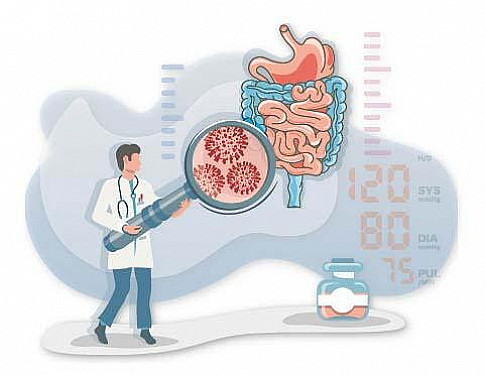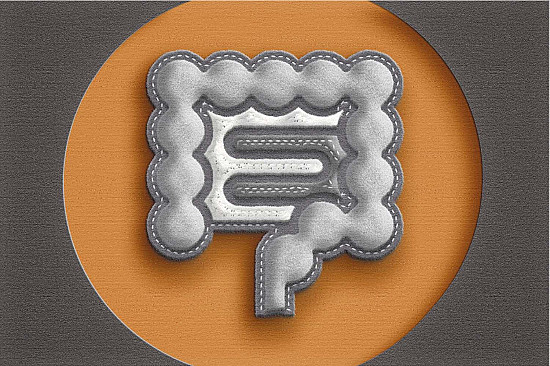Is it really GERD?
Symptoms of gastroesophageal reflux disease might signal another health problem.
- Reviewed by Toni Golen, MD, Editor in Chief, Harvard Women's Health Watch; Editorial Advisory Board Member, Harvard Health Publishing; Contributor

Decades of severe heartburn and other symptoms of gastroesophageal reflux disease (GERD) — a highly common condition in which stomach acid washes backward into the esophagus — had worn Clara down. By the time she was in her 80s, she had long since stopped trying to manage the problem. She ate foods she knew would trigger symptoms, didn’t take medications as directed, and skipped lifestyle changes her doctor recommended.
When Clara started having trouble swallowing, she chalked it up as another GERD symptom and ignored that, too. But this time it meant something far worse: esophageal cancer, the sixth leading cause of cancer deaths worldwide.
Most cases of GERD don’t lead to esophageal cancer, a Harvard expert says. But recurrent or persistent acid reflux should be evaluated and addressed — not only because untreated GERD can damage the esophagus, but because symptoms you think are “just GERD” can signal other health problems, some of which may be life-threatening.
“It’s important to know what you’re dealing with — whether it’s GERD or something else,” says Dr. Elena Fradkov, a gastroenterologist at Harvard-affiliated Mount Auburn Hospital. “And if it’s something as scary as a heart attack, you don’t want to miss it.”
Look-alike conditions
Heartburn is perhaps the most pervasive GERD symptom. “But you may also have an acidic or metallic taste in your mouth, a hoarse voice, chest pain, a dry cough, or post-nasal drip,” Dr. Fradkov says.
These symptoms can overlap with those of several other conditions, including the following:
Hiatal hernia. A condition in which part of the stomach protrudes up through the diaphragm (a sheet of muscle that separates the chest cavity from the abdomen), a hiatal hernia might trigger GERD or simply coexist with it, often without causing any symptoms itself, Dr. Fradkov notes. “Normally, the diaphragm sits where the esophagus and stomach meet,” she explains. “When there’s a hiatal hernia, the top of the stomach looks almost like a tube of toothpaste that’s being squeezed in the middle.” This can cause symptoms associated with GERD.
Functional dyspepsia. This is a complicated name for stomach discomfort, pain, or chronic indigestion that doesn’t stem from an identifiable cause. “There’s no acid reflux into the esophagus,” Dr. Fradkov says. “But people who have it can have symptoms of GERD anyway.”
Eosinophilic esophagitis. Eosinophils are a type of white blood cell involved in allergic reactions. When they collect in the esophagus, this allergic condition inflames the muscular tube, causing difficulty swallowing and other GERD-like symptoms. “The main difference is that eosinophilic esophagitis typically involves much more classic trouble swallowing or food getting stuck,” she says, “whereas typical GERD symptoms include burning, a metallic taste in the mouth, hoarseness, or bad breath.”
Esophageal spasms. Certain medications, as well as eating very cold or very hot foods, can cause involuntary contractions of the esophagus. Like GERD, these spasms can prompt pain, difficulty swallowing, and the feeling that food is stuck in your chest.
Heart attack. Heart attacks sometimes involve a burning sensation along with more typical chest pain. “You may think it’s just your GERD, but if you’re also sweaty, having trouble breathing, or feeling pain that extends into your back, you need to go to a hospital,” Dr. Fradkov says.
Proactive strategies
Depending on your age and other health issues, diagnosing GERD may involve various tests, including an endoscopy, in which a doctor looks directly at the esophagus lining using a camera on a tube passed down the throat. “We can sometimes see inflammation in the esophagus,” Dr. Fradkov says. “That will confirm a GERD diagnosis or allow us to rule out other causes.”
If your symptoms are indeed caused by GERD, your doctor may recommend over-the-counter or prescription medications. But the following lifestyle changes can usually help you manage most or all of the symptoms, Dr. Fradkov says.
Avoid common triggers. Alcohol, coffee, chocolate, tomato sauce, carbonated drinks, peppermint, citrus fruits and juices, and fried, greasy, or acidic foods are all offenders.
Stretch out your eating. Instead of three large meals each day, divide your intake into five or six smaller ones, and eat more slowly.
Stay upright after meals. This helps gravity move foods and drinks downward, instead of allowing stomach contents to back up into the esophagus. Don’t eat in the two to three hours before bedtime, and try elevating your upper body in bed with a foam wedge under your mattress.
Control your weight. Carrying extra pounds, especially in the belly, places more pressure on the sphincter at the bottom of the esophagus that keeps food in the stomach. “It’s pure mechanics,” Dr. Fradkov says. “The more abdominal mass you have, the more it’s going to push on your stomach and squeeze things upward.”
This article is brought to you by Harvard Health Online+, the trusted subscription service from Harvard Medical School. Subscribers enjoy unlimited access to our entire website, including exclusive content, tools, and features available only to members. If you're already a subscriber, you can access your library here.
Image: © AsiaVision/Getty Images
About the Author

Maureen Salamon, Executive Editor, Harvard Women's Health Watch
About the Reviewer

Toni Golen, MD, Editor in Chief, Harvard Women's Health Watch; Editorial Advisory Board Member, Harvard Health Publishing; Contributor
Disclaimer:
As a service to our readers, Harvard Health Publishing provides access to our library of archived content. Please note the date of last review or update on all articles.
No content on this site, regardless of date, should ever be used as a substitute for direct medical advice from your doctor or other qualified clinician.
















